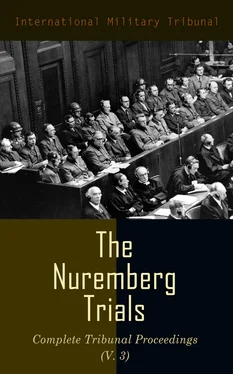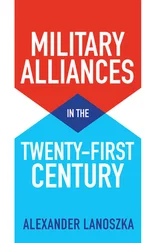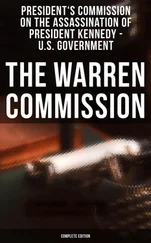Kundt was Henlein’s representative in Prague.
As the harassed Czech Government sought to stem the disorders in the Sudetenland, the German Foreign Office turned to threatening diplomatic tactics in a deliberate effort to increase the tension between the two countries. I offer in evidence Documents 2855-PS, 2854-PS, 2853-PS, and 2856-PS, as United States Exhibits respectively 98, 99, 100, and 101. Four telegrams from the Foreign Office in Berlin to the Legation in Prague were dispatched between the 16th and 24th of September 1938. They are self-explanatory. The first is dated 16 September.
“Tonight 150 subjects of Czechoslovakia of Czech blood were arrested in Germany. This measure is an answer to the arrest of Sudeten Germans since the Führer’s speech of 12 September. I request you to ascertain as soon as possible the number of Sudeten Germans arrested since 12 September as far as possible. The number of those arrested there is estimated conservatively at 400 by the Gestapo. Cable report.”
A handwritten note follows:
“Impossible for me to ascertain these facts as already communicated to the chargé d’affaires.”
The second telegram is dated September 17:
“Most urgent.
“I. Request to inform the local government immediately of the following:
“The Reich Government has decided that:
“(a) Immediately as many Czech subjects of Czech descent, Czech-speaking Jews included, will be arrested in Germany as Sudeten Germans have been in Czechoslovakia since the beginning of the week; (b) If any Sudeten Germans should be executed pursuant to a death sentence on the basis of martial law, an equal number of Czechs will be shot in Germany.”
The third telegram was sent on 24 September. I read it:
“According to information received here, Czechs have arrested two German frontier policemen, seven customs officials, and 30 railway officials. As counter measure all the Czech staff in Marschegg were arrested. We are prepared to exchange the arrested Czech officials for the German officials. Please approach Government there and wire result.”
On the same day the fourth telegram was dispatched, and I read the last paragraph:
“ ‘Confidential’. Yielding of Czech hostages arrested here for the prevention of the execution of any sentences passed by military courts against Sudeten Germans is, of course, out of question.”
In the latter half of September, Henlein devoted himself and his followers wholeheartedly to the preparations for the coming German attack. About 15 September, after Hitler’s provocative Nuremberg speech in which he accused Beneš of torturing and planning the extermination of the Sudeten Germans, Henlein and Karl Hermann Frank, one of his principal deputies, fled to Germany to avoid arrest by the Czech Government. In Germany Henlein broadcast over the powerful Reichsender radio station his determination to lead the Sudeten Germans home to the Reich and denounced what he called the Hussites-Bolshevist criminals of Prague. From his headquarters in a castle at Donndorf, outside Bayreuth, he kept in close touch with the leading Nazi conspirators, including Hitler and Himmler. He directed activities along the border and began the organization of the Sudeten German Free Corps, an auxiliary military organization. You will find these events set forth in the Czechoslovak official government report, 998-PS, which has already been offered as Exhibit USA-91.
Henlein’s activities were carried on with the advice and assistance of the German Nazi leaders. Lieutenant Colonel Köchling was assigned to Henlein in an advisory capacity to assist with the Sudeten German Free Corps. In a conference with Hitler on the night of September 17, Köchling received far-reaching military powers.
At this conference, the purpose of the Free Corps was frankly stated—the maintenance of disorder and clashes. I read from Item 25, a handwritten note labelled “most secret,” on Page 49 of the Schmundt file, Document 388-PS:
“Most secret. Last night conference took place between Führer and Lieutenant Colonel Köchling. Duration of conference 7 minutes. Lieutenant Colonel Köchling remains directly responsible to OKW. He will be assigned to Konrad Henlein in an advisory capacity. He received far-reaching military plenary powers from the Führer. The Sudeten German Free Corps remains responsible to Konrad Henlein alone. Purpose: Protection of the Sudeten Germans and maintenance of disturbances and clashes. The Free Corps will be established in Germany. Armament only with Austrian weapons. Activities of Free Corps to begin as soon as possible.”
THE PRESIDENT: Would that be a good place to break off for 10 minutes?
MR. ALDERMAN: May it please the Tribunal, General Jodl’s diary again gives a further insight into the position of the Henlein Free Corps. At this time, the Free Corps was engaged in active skirmishing along the Czech border, furnishing incidents and provocation in the desired manner. I quote from the entries in the Jodl diary, for the 19th and 20th September 1938, at Page 6 of the Document 1780-PS, which is Exhibit USA-72.
“19 September: Order is given to the Army High Command to take care of the Sudeten German Free Corps.
“20 September: England and France have handed over their demands in Prague, the contents of which are still unknown. The activities of the Free Corps start assuming such an extent that they may bring about, and already have brought about, consequences harmful to the plans of the Army. (Transferring rather strong units of the Czech Army to the proximity of the border.) By checking with Lieutenant Colonel Köchling, I attempt to lead these activities into normal channels.
“Toward the evening the Führer also takes a hand and gives permission to act only with groups up to 12 men each, after the approval of the corps headquarters.”
A report from Henlein’s staff, which was found in Hitler’s headquarters, boasted of the offensive operations of the Free Corps. It is Item 30 of the Schmundt file, Page 54 of Document 388-PS. I read the last two paragraphs:
“Since 19 September, in more than 300 missions, the Free Corps has executed its task with an amazing spirit of attack,”—now, that word “attack” was changed by superimposition to “defense”—“and with a willingness often reaching a degree of unqualified self-sacrifice. The result of the first phase of its activities: More than 1500 prisoners, 25 MG’s”—which I suppose means machine guns—“and a large amount of other weapons and equipment, aside from serious losses in dead and wounded suffered by the enemy.”—And there was superimposed in place of “enemy”, “the Czech terrorists.”
In his headquarters in the castle at Donndorf, Henlein was in close touch with Admiral Canaris of the Intelligence Division of the OKW and with the SS and the SA. The liaison officer between the SS and Henlein was Oberführer Gottlob Berger (SS).
I now offer in evidence Document 3036-PS as Exhibit USA-102, which is an affidavit executed by Gottlob Berger; and in connection with that affidavit, I wish to submit to the Tribunal that it presents, we think, quite a different question of proof from the Schuschnigg affidavits which were not admitted in evidence by the Court. Schuschnigg, of course, was a neutral and non-Nazi Austrian. He was not a member of this conspiracy, and I can well understand that the Court rejected his affidavit for these reasons.
This man was a Nazi. He was serving in this conspiracy. He has made this affidavit. We think the affidavit has probative value and should be admitted by the Tribunal under the pertinent provision of the Charter, which says that you will accept in evidence any evidence having probative value. We think it would be unfair to require us to bring here as a witness a man who would certainly be a hostile witness, who is to us a member of this conspiracy, and it seems to us that the affidavit should be admitted with leave to the defendants, if they wish, to call the author of the affidavit as their witness. I should have added that this man was a prominent member of the SS which is charged before you as being a criminal organization, and we think the document is perfectly competent in evidence as an admission against interest by a prominent member of the SS organization.
Читать дальше












